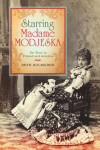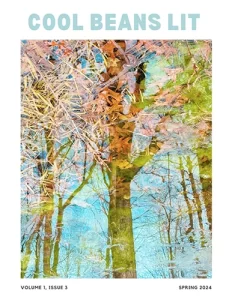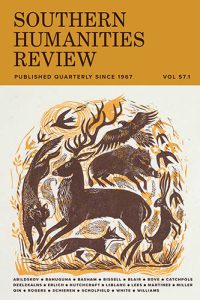Starring Madame Modjeska
Prior to audio and video, theatre history is a frustratingly silent one. Reviews, illustrations, journal entries, photographs, designs, and prompt books are helpful—and rare.
Prior to audio and video, theatre history is a frustratingly silent one. Reviews, illustrations, journal entries, photographs, designs, and prompt books are helpful—and rare.
But what about the performers and performance?
For Maria Modjeska (1840-1909), her “binational” acting career was fairly well-documented in her native Poland and adopted America. A talented, ambitious, and generous spirit, her pretty face sold picture postcards and candy. Modjeska’s immortalization was furthered by a guest appearance in Willa Cather’s My Mortal Enemy and one of the many droll lines delivered by George Saunders in All About Eve. In America, Susan Sontag’s last novel, re-imagines Modjeska’s early days on her unsuccessful California commune. Now Modjeska’s truly dramatic life is presented in Beth Holmgren’s Starring Madame Modjeska: On Tour in Poland in America, a fastidiously researched and fascinating portrayal of an actor’s life.
Before Eugene O’Neill borrowed his actor-father James (a contemporary of Modjeska’s) and the rest of his family history for writing material or Florenz Ziegfeld produced his Follies and Showboat, American theatre was as spread out as the growing nation. There was vaudeville, Wild West shows, circuses, and touring companies led by stars like Sarah Bernhardt and Maria Modjeska. From 1882-1907 Modjeska toured the United States 24 times, usually in need of funds for her large extended family. Her repertory included everything from the melodramas The Lady of the Camellias and Adriana Lecouvreur (better known today in their operatic treatments) to Schiller’s Mary Stuart. She was the first actress in America to portray Nora in Ibsen’s A Doll House. Holmgren’s selection of photographs attests to Madame’s appearance, described in a review as being
of middling height, although one might consider her a tall woman, with regular and expressive features. Her eyes and smile are capable of all manner of shading and play a key role [in her performance]. And she possesses that great harmony of form that the Greek art deemed most alluring in a woman.
A contemporary actress who bears a strong resemblance to Maria Modjeska is the talented and beautiful Charlotte Rampling.
Beloved in her native Poland for not performing in the occupying empires’ languages of German and Russian, she endeared herself to the American public for acting in English. Modjeska’s great love was Shakespeare. Her Ophelia led to the role being considered a major rather than a minor role (fans left after the Mad Scene), and she regularly performed Queen Katherine in the still rarely seen Henry VIII. While Poles and Americans adored her Shakespearian efforts, the British were not impressed:
Modjeska had sinned against a national taste in presuming to play a romantic Shakespeare heroine. . . . British reviewers, much like her critics in both America and Poland, had identified and praised Modjeska’s intelligent “self-conscious artistry” in other roles, qualities antithetical to the “naturalness” and “charm” so beloved of English actresses, and particularly of Ellen Terry, at that time. In the eyes of the Victorian English public Modjeska could never excel as a Juliet on account of her ethnicity and technique.
This nationalistic snobbery would last until the latter half of the twentieth century with the emergence of brilliant Shakespeareans such as South African-raised Nigel Hawthorne, South African-born Antony Sher, and Australian Geoffrey Rush.
Not surprisingly, Modjeska advocated that non-British actors be routinely considered and cast in Shakespeare: something not just practiced, but celebrated for decades in regional companies and festivals throughout the United States and Canada. Other ideas proved equally prophetic. A survivor of the catty, backstabbing atmosphere of Polish theater, Modjeska called for the abolishment of a “star system”; performers are alphabetically listed in repertory companies and the New York City Ballet. Ironically it was Britain, not America, that took Madame’s advice for establishing a national theater.
What Maria Modjeska did accomplish in her lifetime was promotion of theater’s “refining and wholesome influence.” Holmgren points out that the combination of relentless touring of actors like Modjeska along with the seismic socioeconomic changes of the nineteenth century made attending theater accessible and civilized:
Theatergoing, as a respectable form of mass entertainment, also fundamentally changed the relationship between patrons and players. As women and children swelled the numbers of theatergoers and audiences were being educated about proper theater behavior, the spotlight shifted literally from the seats to the stage, with the house lights dimming as the show began.
Something not lost on Modjeska’s friend, poet Eugene Field. His poem, “Modjesky As Cameel,” is an affectionate first-hand account of Madame’s performance of The Lady of the Camellias:
A young chap sparks a gal, who’s caught a dook that’s old an’ wealthy,—
She has a cold ‘nd faintin’ fits, and is gin’rally onhealthy.
She says she has a record; but the young chap doesn’t mind,
And it looks ez if the feller wuz a proper likely kind
Until his old man sneaks around ‘nd makes a dirty break,
And the young one plays the sucker ‘nd gives the girl the shake.
While theater enthusiasts will enjoy the care and detail that Beth Holmgren took with Starring Madame Modjeska: On Tour in Poland in America, readers of history will appreciate the role this woman played on the world’s stage. It makes for great drama.





